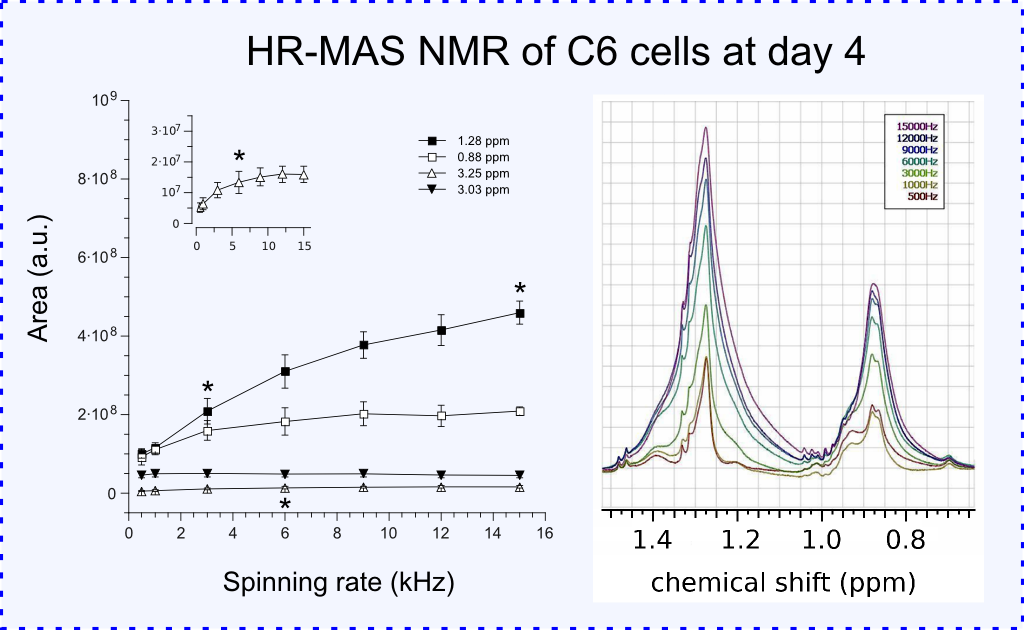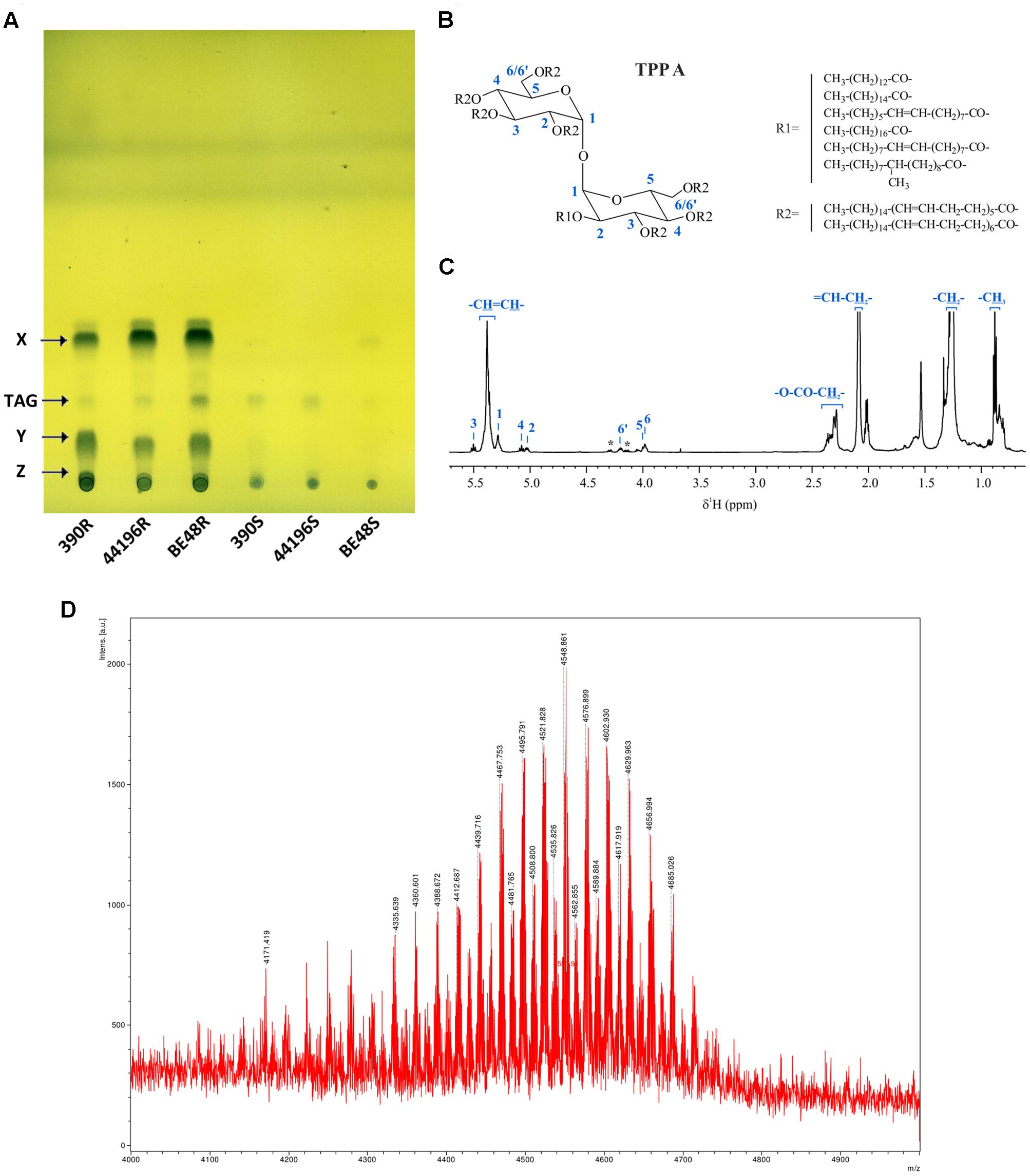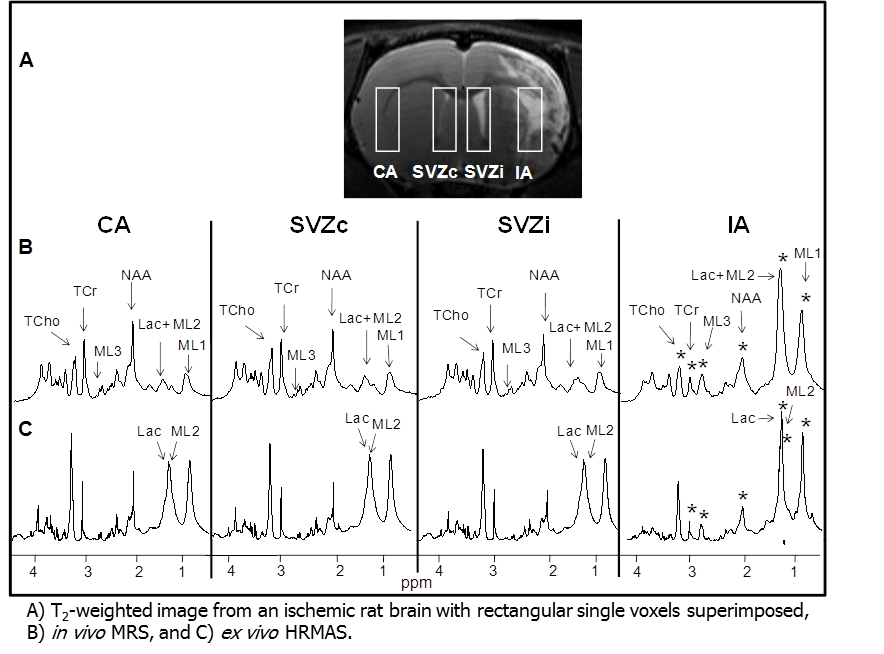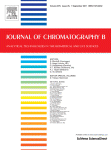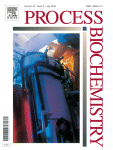 “Influence of the spinning rate in the HR-MAS pattern of mobile lipids in C6 glioma cells and in artificial oil bodies” Juana Martín-Sitjar, Teresa Delgado-Goñi, Miquel E. Cabañas, Jason Tzen, Carles Arús; Magnetic Resonance Materials in Physics, Biology and Medicine, 2012, 25(6):487-496. DOI: 10.1007/s10334-012-0327-6
“Influence of the spinning rate in the HR-MAS pattern of mobile lipids in C6 glioma cells and in artificial oil bodies” Juana Martín-Sitjar, Teresa Delgado-Goñi, Miquel E. Cabañas, Jason Tzen, Carles Arús; Magnetic Resonance Materials in Physics, Biology and Medicine, 2012, 25(6):487-496. DOI: 10.1007/s10334-012-0327-6
Object: To evaluate how spinning rate affects mobile lipid (ML) resonances visibility in HR-MAS spectra of C6 glioma cells and artificial oil bodies (AOB), as models of cytosolic lipid droplets. Materials and methods: Using C6 cells and AOB of two different sizes, 780 ± 580 and 240 ± 293 nm, as models, we acquired HR-MAS pulse and acquire spectra at different spinning rates between 500 and 15,000 Hz, all at 37 °C. Results: Sample spinning at 15,000 Hz increased by 2.3 and 4.6-fold with respect to 500 Hz spinning the area of resonances corresponding to ML at 0.88 and 1.28 ppm, respectively, for log phase C6 cells. Furthermore, postconfluent C6 cells displayed an increase of 2.5-fold at 0.88 ppm and 4.2-fold at 1.28 ppm. These changes were reversible upon low speed spinning. AOBs did show much lower ML area increases (1.4–1.5-fold) upon high-speed HR-MAS. Conclusion: ML can be reversibly mobilized in C6 glioma cells by high-speed HR-MAS, partially unveiling the NMR “invisible” ML pool. A small part of the ML pool also shows reduced visibility in freely tumbling AOBs.
